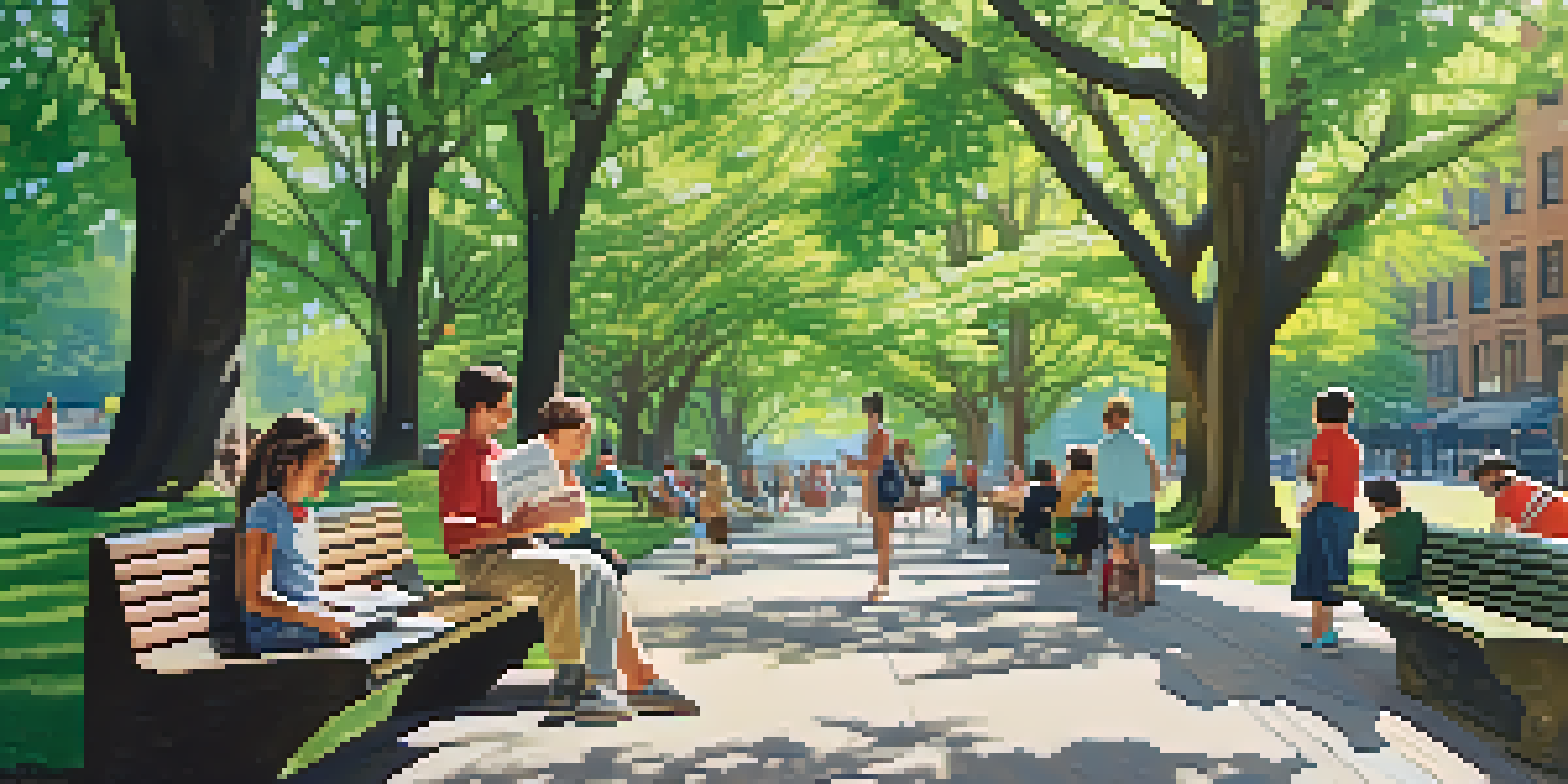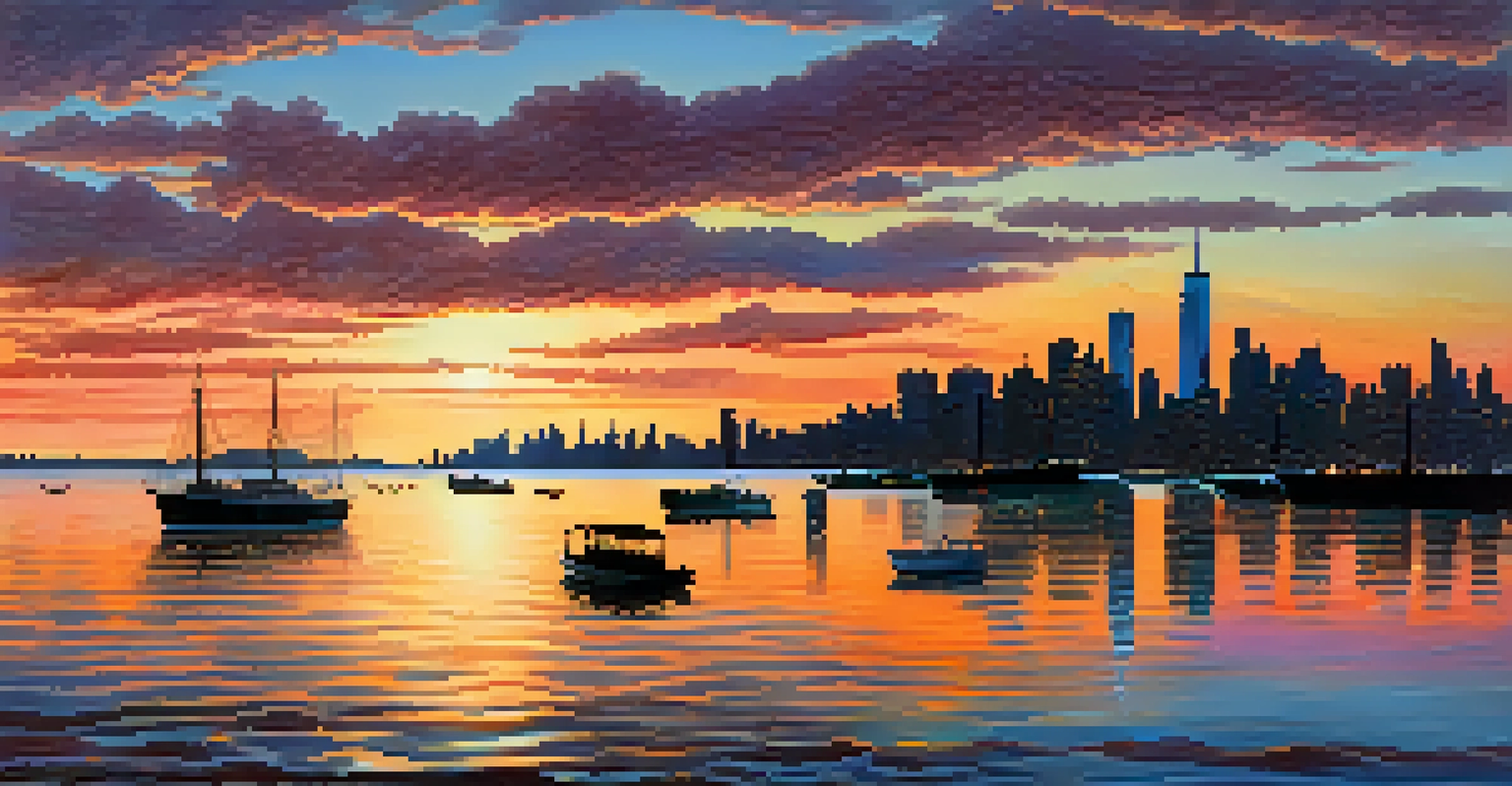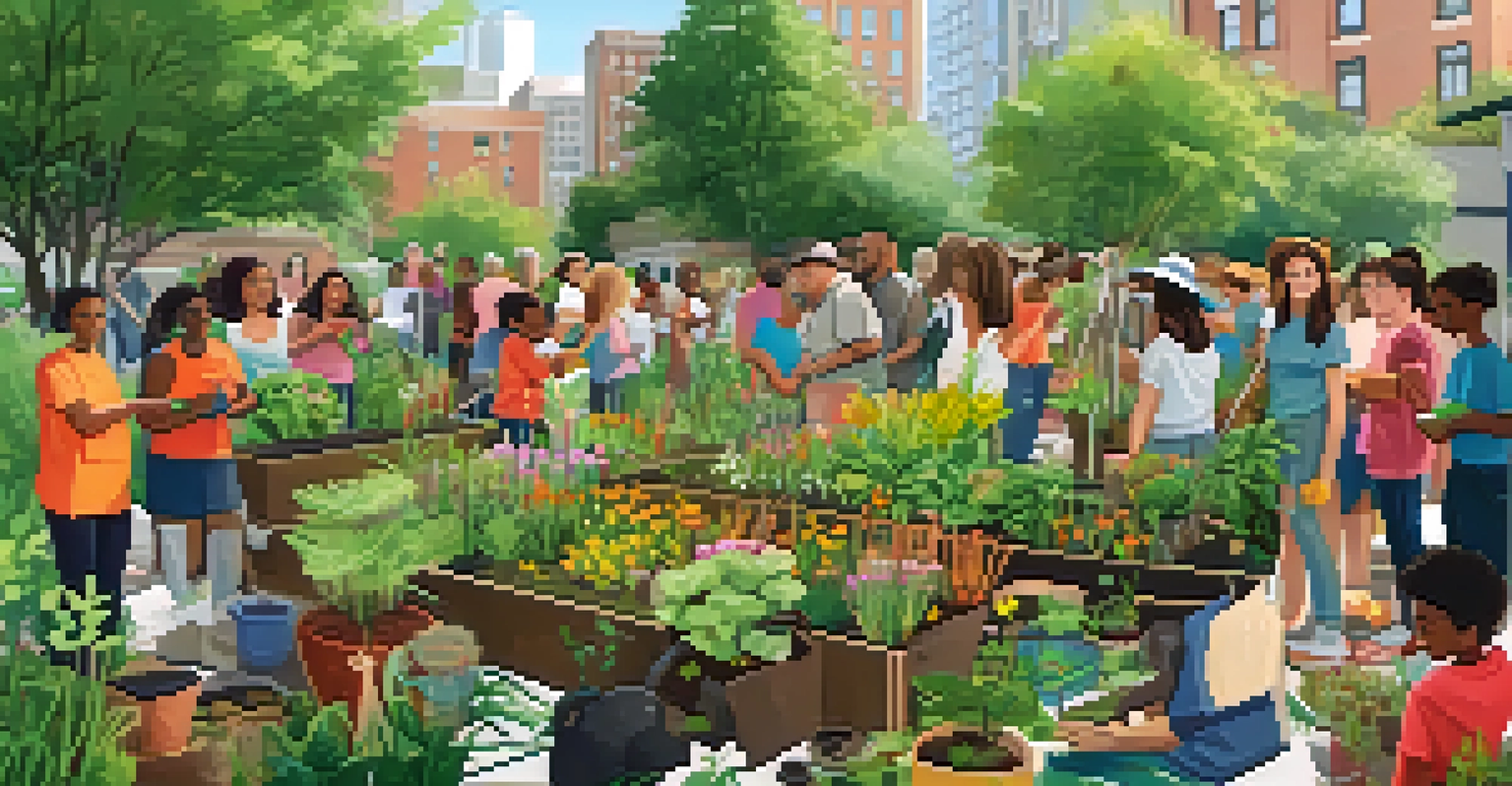Biodiversity Loss in NYC: Challenges and Conservation Efforts

Understanding Biodiversity and Its Importance in NYC
Biodiversity refers to the variety of life found in a particular habitat or ecosystem. In New York City, this includes everything from the iconic Central Park squirrels to the diverse marine life in New York Harbor. The richness of these species contributes not only to ecological balance but also to the city’s cultural identity and recreational opportunities.
The greatest threat to our planet is the belief that someone else will save it.
However, urbanization has led to significant habitat loss, threatening this biodiversity. As buildings rise and parks shrink, many species struggle to adapt to the changing environment. This loss not only impacts wildlife but can also affect human well-being, as diverse ecosystems play a vital role in providing clean air, water, and natural beauty.
Understanding the significance of biodiversity is the first step in recognizing the challenges we face. By valuing our natural resources, we can become more engaged in conservation efforts that seek to protect these vital ecosystems for future generations.
Key Factors Contributing to Biodiversity Loss in NYC
Several factors contribute to biodiversity loss in New York City, with urban development being the most significant. The relentless expansion of infrastructure, such as roads and buildings, leads to habitat destruction and fragmentation, making it harder for species to thrive. This urban sprawl can create barriers for wildlife movement, isolating populations and reducing genetic diversity.

Pollution is another critical issue that affects biodiversity. Contaminants in air, water, and soil can harm wildlife and degrade habitats. For instance, runoff from streets can carry harmful chemicals into local waterways, impacting aquatic life and diminishing habitat quality.
Biodiversity is Vital for NYC
The variety of life in New York City enriches ecosystems and enhances the quality of life for its residents.
Furthermore, climate change poses an additional threat, altering weather patterns and impacting seasonal behaviors of many species. As temperatures rise and sea levels increase, species that once thrived in these environments may find themselves struggling to survive. Together, these factors paint a concerning picture for biodiversity in NYC.
Impact of Biodiversity Loss on Urban Ecosystems
The loss of biodiversity in urban areas like NYC has far-reaching consequences. When species vanish, the balance of ecosystems is disrupted, leading to issues such as pest outbreaks and reduced pollination of plants. For example, the decline of pollinators like bees can directly affect the growth of urban gardens and green spaces.
We do not inherit the earth from our ancestors, we borrow it from our children.
Moreover, biodiversity contributes to the resilience of urban ecosystems, helping them adapt to changes and recover from disturbances. When diverse species are present, they can provide essential services, such as water filtration and air purification, which are crucial in a densely populated city.
Ultimately, losing biodiversity weakens the overall health of urban environments. It impacts the quality of life for residents, reduces recreational spaces, and can even lead to increased vulnerability to climate-related challenges.
Current Conservation Efforts in NYC
Despite the challenges, various conservation efforts are underway in NYC to protect and restore biodiversity. Organizations like the NYC Department of Environmental Protection and the Wildlife Conservation Society are actively working to create and maintain green spaces and habitats. Initiatives range from restoring coastal wetlands to enhancing urban parks.
Community involvement plays a crucial role in these efforts. Local organizations often host volunteer days for tree planting, cleanup events, and educational workshops. Engaging residents in conservation fosters a sense of ownership and encourages sustainable practices, making a collective impact on the city’s biodiversity.
Urban Development Threatens Life
Urbanization, pollution, and climate change are significant factors leading to the loss of biodiversity in NYC.
Moreover, innovative urban planning strategies, such as green roofs and wildlife corridors, are being implemented to promote biodiversity. These approaches not only improve urban aesthetics but also provide essential habitats for various species, demonstrating that conservation can be integrated into city living.
The Role of Education in Biodiversity Conservation
Education is a powerful tool in the fight against biodiversity loss. By raising awareness about the importance of local ecosystems, residents can become advocates for conservation. Schools and community programs that focus on nature education can inspire people to appreciate and protect their natural surroundings.
Programs aimed at teaching children about local wildlife and ecosystems can foster a sense of responsibility from a young age. When kids learn about the intricate relationships between species and their habitats, they are more likely to grow into adults who value and prioritize conservation efforts.
Furthermore, educational campaigns targeting adults can help spread knowledge about sustainable practices, such as reducing waste and supporting local conservation initiatives. This collective understanding can lead to more informed decisions that positively impact biodiversity in the city.
Community Involvement and Its Impact on Conservation
Community involvement is vital for successful biodiversity conservation in NYC. Local residents often have the most intimate knowledge of their neighborhoods and can identify areas that need attention. By participating in community-led initiatives, individuals can contribute to restoring habitats and protecting local wildlife.
Engaging neighborhoods in conservation efforts also helps build a sense of community around shared goals. When people come together for a common cause, such as cleaning up a local park or planting native species, it fosters connections among residents and cultivates a culture of stewardship.
Community Action is Essential
Engaging local residents in conservation efforts fosters stewardship and strengthens the impact of biodiversity initiatives.
Additionally, community involvement can amplify the impact of larger organizations. Grassroots movements often highlight issues that may be overlooked, ensuring that the needs of local ecosystems are addressed in broader conservation strategies. This collaboration can lead to more effective solutions that benefit both people and wildlife.
Looking Ahead: The Future of Biodiversity in NYC
As we look to the future, the preservation of biodiversity in NYC will require a concerted effort from all stakeholders—government, organizations, and residents alike. Implementing sustainable urban planning practices and prioritizing habitat restoration are essential steps in this journey. By committing to these strategies, we can create a healthier environment for both wildlife and people.
Continued education and community engagement will also be crucial in shaping the future of NYC’s biodiversity. As more individuals become informed and involved, the collective impact can lead to significant changes in how we interact with our environment.

Ultimately, the future of biodiversity in New York City rests on our shoulders. By recognizing the value of our natural resources and taking action, we can ensure that the rich tapestry of life in this vibrant city continues to thrive for generations to come.